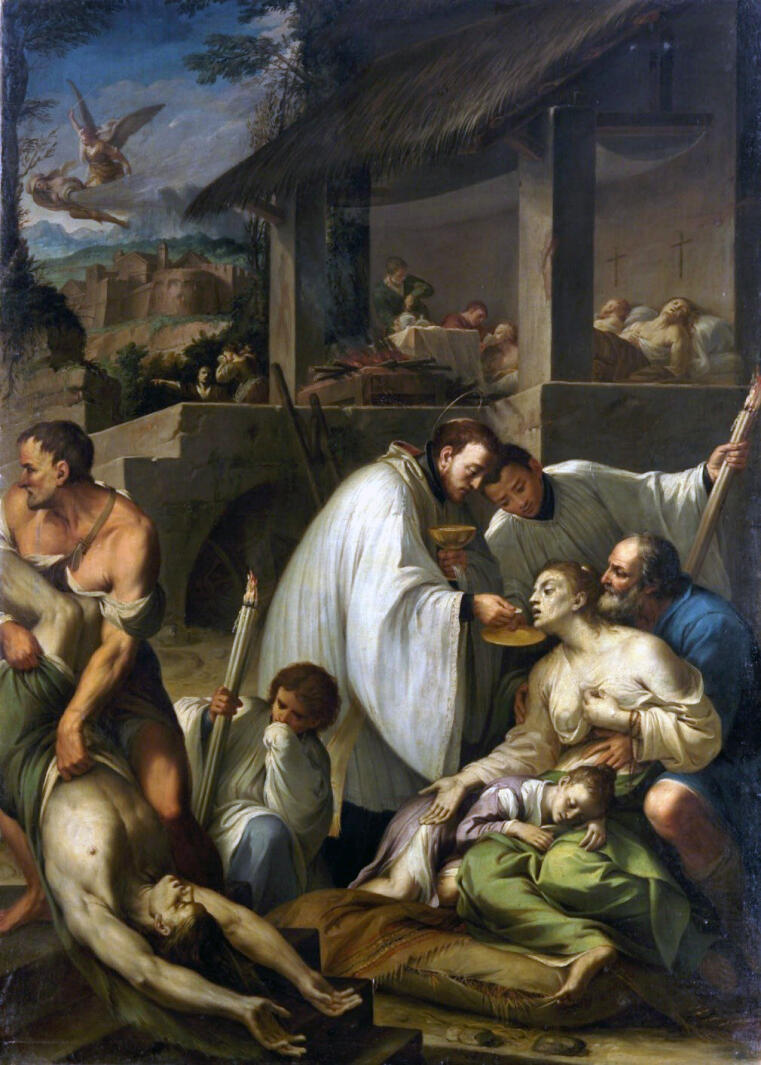Imagination and affect in the face of the (in)visible threat
By Eva-Bettina Krems
Since the Renaissance, doctors, philosophers, writers, and members of the clergy all over Europe have formulated many theories about diseases, and especially the plague, most of these theories being based on the assumption that illnesses are very closely connected with conceived images and strong emotions (classical affects). Important impetus was provided by the German physician Daniel Sennert (1572-1637), who documented numerous cases, especially in Wittenberg, where infection with the plague was caused not by physical contact with an infected person, but by the feeling of horror at witnessing (albeit from a safe distance) actions linked to the disease. For example, simply the shock of seeing a cart loaded with corpses passing by on its way to the burial site could trigger the disease, and terrible dreams were also said to have caused the plague. Sennert took these cases as proof that “the passion of the soul” actually accelerates the outbreak and spread of diseases like the plague, and alters the body. Similarly, the Anglican clergyman Robert Burton (1577-1640), who worked as a scholar and librarian at Christ Church College in Oxford, argued that an agitated imagination could be fatal. In his Anatomy of Melancholy (1621), Burton mentions the case of a man who literally died of fear, when he came to the (albeit erroneous) conclusion that he had been in the presence of someone suffering from the plague: “the mind most effectively works upon the body, producing by its passions and perturbations miraculous effects, cruel diseases, and sometimes death itself”. During the outbreak of plague in Rome in 1656, the physician Gregorio Rossi warned: “Procul omnis tristitia, venus, signities. Mens sit hilaris, contemplationibis non laxetur” (“Avoid sadness and desire: the spirit should be happy, and it should not lapse into contemplation”) (De Peste, 1656). The papal physician Matteo Naldi also believed that violent emotional states made the body more susceptible to plague, “either because of their affection for the deceased, or because of their fear that they will be infected by the deceased, or because of some other trauma” (Regole per la cura del contagio, 1656; my translation).

Such discussions about the deadly consequences that sheer imagination and affects could have in epidemic events (events that neither science nor the clergy were able to explain) opened up for the artistic depiction of plague very specific dimensions of meaning in the 17th and 18th centuries. The painting shown here, from the Kunsthistorisches Museum in Vienna, can serve as an example of the role of saints (usually depicted is St. Charles Borromeo), who, faced with devastating plague epidemics, were able to defy danger heroically. We can first see in the painting a clergyman giving communion, this figure recently being identified as the French Jesuit and preacher Jean-François Régis (1597-1640), who was canonized in 1737. The picture was probably painted shortly after his beatification in 1717 under Pope Clement XI; it might have been a gift from the Jesuit Order to the Pope in gratitude for the positive outcome of the process of beatification. While in the top left of the painting the calamity in the form of dark clouds, the “bad air”, spreads over the city in the presence of an angel of pestilence, the main event takes place outside the city walls. In the foreground of the painting, at its centre, is the Jesuit cleric, concentrated, calm, with an unshakable trust in God. He is a model demonstrating the control of affects; it is only by controlling his affects that he can give comfort, even in a situation so hopeless. To the left of the painting, a male corpse is being dragged away in an undignified and dramatic manner. This man presumably belongs to the family of the dying woman, who to the right of the painting is using her last strength to obtain communion and is holding an already lifeless child on her lap. The family has been torn apart by the terrible fate delivered by the plague. Even the young altar boy kneeling with the candle is covering his nose to protect himself, thus giving a visual form to the acrid stench associated with the plague.
The painting offers a counter-model to the social order under threat from the plague, a social order that, as the description of many ancient sources already suggest, is manifested in the neglect of rules of hygiene and of charitable duties. This counter-model is not limited to the actions of the saint: the dying woman is being supported by an older, bearded man, who, like the saint and the altar boy next to him, is ignoring both the stench and his own fear. Finally, in the middle of the painting, in an elevated open space protected only by a thatched roof, the care of the sick and of those in need is shown, in order to demonstrate not only steadfastness in faith but also charitable services as moral obligations in times of disaster. With this representation the order of the Jesuits erected a monument to itself. In the context of the medical theories of affect of the time, this monument even proves to be epidemically evident.

